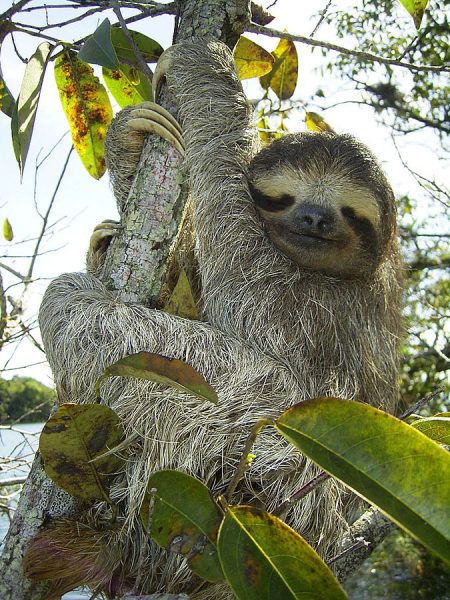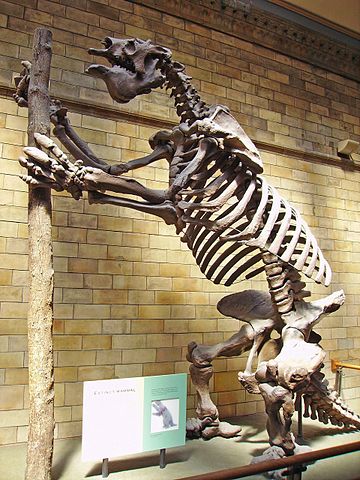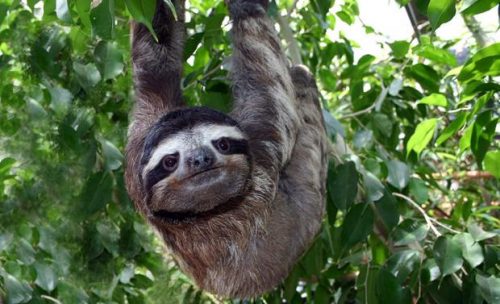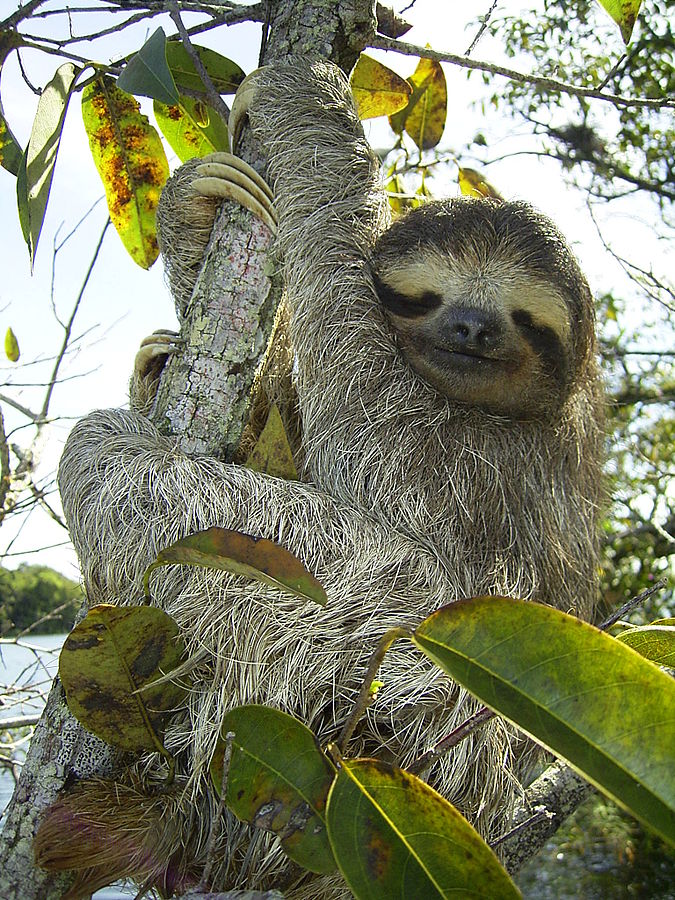7 Amazing Facts About Sloths
Sloths are one of the cutest and most lovable animals in the world. Some of the most amazing facts about sloths serve to demonstrate their comical and unusual characteristic features that ever existed in any animal. The name of these animals itself prompts us to think that there must be something different about sloths if they are named after one of the capital sins.

We have singled out seven of the most amazing facts about sloths that will immediately grab the attention of any animal lover eager to know more about these wonders of nature. But before passing on the revelation of sloths’ “darkest” secrets let’s first get a general idea as of what type of animals they are.
Related: Sloths Being Cute: They Just Can’t Help Themselves
Sloths are tropical mammals named after the capital sin “sloth” because of their idleness and slow-motioned character. However, not many know that their “laziness” is, in fact, a kind of an adaptation of metabolism for the sake of conserving energy. Sloths inhabit the jungles of Central and South America despite the fact that their “ancestors” were natives of North America. Sloths are classified into two main categories – two-toed and three-toed sloths. The former is slightly bigger than the latter though they share lots of same features.
So below are seven fun and amazing facts about sloths that will have you falling in love with these magnificent creatures.
7 Amazing Facts About Sloths You Might Not Know (Yet)
They are not as Lazy as They Seem
Sloths have been known to be lazy, slow and idle not only because they move extremely slowly but because they sleep 15-20 hours a day. However, a recent study has proven that sloths are, in fact, not as lazy as many of us think. By carefully researching the brain wave patterns of different three-toed sloths in the Panamanian rain forest scientists found out that wild sloths sleep only about 9 hours a day and not 15-20 hours.
The key point here is that the records of sloths’ sleeping over 15 hours were assumed according to the studies carried out on captive sloths. However, as mentioned, the study of wild sloths, by putting a brain wave cap fixed on the, found that they are less lazy as they live and grow absolutely in natural conditions without man’s intervention.
The “Gigantic Past” of Sloths
Modern sloths match the size of a medium dog. However, their “ancestors” were far from being that small. Prehistoric sloths used to be the size of an elephant. One example is the pre historic sloth Megatherium that was about 6-7 meters tall and weighed 4-7 tonnes. This giant sloth existed about 10,000 years ago in the Pliocene epoch. No matter how big a fan of sloths you are, you wouldn’t think they are as cute, adorable and harmless if you met one in that time.

Sloth Fur is a Whole New Habitat for Smaller Creatures
We can say that sloths are an ecosystem onto themselves. Their fur serves as a habitat to moths, which shouldn’t come as a big surprise because they spend most of their time in a tree not worrying about “showering,” resulting in their fur developing deep grooves that serve as a home for colonies of symbiotic algae. The latter are also beneficial for the sloths as they can change their hair into a green color during rainy seasons, helping them merge with the environment and hide them from predators.
Concerning the moths, it’s no wonder that they “live” in the fur of sloths as they have food and a hideout there. Algae serves as food for moths, and the coat is perfect for them to hide from their predators.
Sloths Don’t Have to Defecate Very Too Often
Sloths are lucky enough not to worry about “going to the bathroom” too often. Rather they do it rarely or, to be more precise, once a week. In fact, defecating is the only cause that will make a sloth leave their tree for the ground. And what’s even more interesting in this fun fact is that sloths loose about a third of their body weight by going down to the ground even once a week. Despite this, the weight doesn’t seem to bother them throughout the whole week.
The good thing about having to defecate so rarely is that going down to the ground might be dangerous for sloths as the predators might be around. However, they face a threat only once a week.
Related: Baby Sloth Orphanage Rescue Center – Behind the Scenes
Sloths are Good Swimmers
It’s entirely true that sloths spend most of their life hanging upside down from trees however they are also excellent swimmers. These cute creatures like being either in the air or in water, while ignoring the earth. Sloths move three times faster in water than they do on the ground and the best point about their swimming powers is that they can hold their breath for about 40 minutes under water, any human swimmer or diver would be envious of that.
The reason sloths can hold their breath for so long is that they have the ability to decrease the rate of their heartbeat by one-third of its normal rhythm.

The Power of the Claws of Sloths Remains Even after Death
The muscles and limbs of sloths have become strong and flexible due to their everyday hunt for food by climbing trees and trunks and when escaping predators. Above all, they hang from trees upside down which also makes for strong claws. According to National Geographic, the grip of a sloth is so firm and sturdy that even after death they can be found holding tightly to the branch they were hanging from when dying. And, sometimes it’s difficult for predators to catch a sloth even though it’s already dead because not all of them can climb trees to get to the sloths.
Related: What Does the Sloth Say? Nothing But Cuteness Video
Sloths Unique Way of Mating
Sloths keep their habit of being in trees even while mating and giving birth. When a female sloth is ready to mate, she yells a “mating scream” so as to inform the male sloths that they can start the “fight for her heart.” Males, in turn, start fighting for the female sloth by pawing at each other while hanging from the branches by their feet. The one who wins gets the chance of mating with the female sloth.
The gestation of baby sloths might last from 5-6 up to 11.5 months for different types of sloths. Baby sloths don’t leave their mothers immediately after birth. It takes several weeks of hanging from the mother’s belly until the baby sloths become ready to live independently. However, even after the “belly clinging” period is over, they stay close to their mothers for about four years.
Related: Fun Facts About Sloths That Will Make You Fall in Love with Them
Sloths are just one example of the exciting and fun creatures that nature has provided. These mammals are a favorite of many animal-lovers, and due to all their fascinating abilities and features, they will interest even the most “uninterested-in-nature” person. Keep learning and finding out more amazing facts about sloths and other wonders of nature!
Guest Contributor: ReviewsBee.com
![]()
MY QUESTION FOR YOU:
Do you love sloths as much as I do?
*** Leave your comment below. ***
(It’s just sexy!)

Thank you for taking the time to visit my blog!

*
DISCLOSURE: Animal Bliss is a participant in the Amazon Services LLC Associates Program, an affiliate advertising program designed to provide a means for us to earn fees by linking to Amazon.com and affiliated sites.
(In other words, we’ll get a very small, teeny tiny) commission from purchases made through links on this website.)
(Coffee money – thank you!)
😀
[amazon_link asins=’B00BB7YETE,0761193367,1441319409,B01N1ZF96I,B00KO6B3U6,1545202974′ template=’ProductCarousel’ store=’animalbliss-blog-20′ marketplace=’US’ link_id=’f9224451-6fac-11e7-bb3b-a5557550363b’]
- 4 Tips for Maintaining Healthy Weight for Your Cat - December 20, 2019
- 8 Amazing Benefits of CBD for Dogs and Other Pets - December 12, 2019
- Kibble or Canned Pet Food? What Should Your Pet Be Eating? - December 9, 2019

